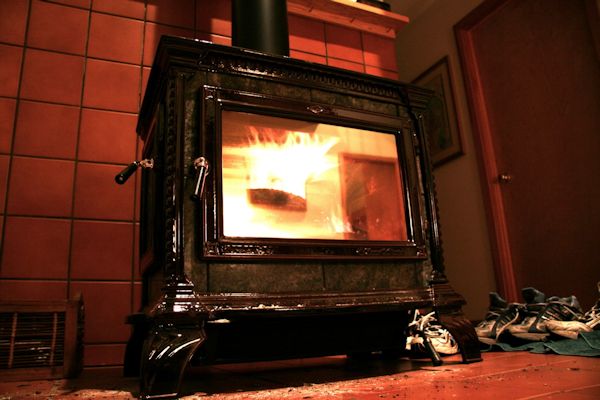SEJournal Online is the digital news magazine of the Society of Environmental Journalists. Learn more about SEJournal Online, including submission, subscription and advertising information.
 |
| The Trump administration is considering a delay in implementing standards that require new wood stoves to emit less particulates. Photo: Dan Phiffer, courtesy of Flickr Creative Commons. Click to enlarge. |
TipSheet: Delay in EPA Rule on Wood Stove Heating Fires Controversy
As snow deepens and Arctic cold bites, Americans in many areas are feeding wood stoves to stay warm. Where many such stoves are found, the smell of smoke means “we live here.” But whether in remote or urban areas, wood stoves are also often a source of unhealthful particulate pollution.
The U.S. Environmental Protection Agency set a standard back in 2015 that requires new wood stoves to emit less particulates by burning more efficiently (EPA publishes a list of stoves meeting the standard). More recently, though, the Trump EPA said it was considering a two-year delay in the deadline ostensibly to allow dealers time to sell off their stock of the older, non-complying stoves.
But states like Alaska, New York and Oregon are pushing back. In Fairbanks, Alaska, for instance, where there are high levels of air particulates in large part because of wood heating, environmentalists are suing for more controls.
But if you live in the remote hills of West Virginia, where a stove and a large pile of firewood will get you through the winter, don’t try to pass a law telling people what to do with their stoves.
Why it matters
The fine particles in wood smoke can seriously damage the health of those who breathe them. Effects include chronic lung disease, heart disease and cerebrovascular disease.
The World Health Organization estimates that particulate air pollution causes as many as 800,000 premature deaths annually worldwide. Wood burning causes a major share of particulate pollution (though this varies locally).
Wood stoves last a long time — decades.
That is one reason why health advocates
want to get on with the job of moving to
cleaner stoves, at least in new installations.
Wood stoves last a long time — decades. That is one reason why health advocates want to get on with the job of moving to cleaner stoves, at least in new installations.
State and local governments, who are usually on the hook for actually making local air cleaner, play a big role in implementing the move to cleaner stoves, via various laws, regulations, ordinances and codes.
Politically, it is difficult to do this with coercion. That’s why the focus is on new installations. It’s also the reason why governments, including the federal EPA, offer some financial incentives for people to change from dirty old stoves to cleaner new ones. Some localities offer direct grants to homeowners to make the switch to cleaner equipment.
Story ideas
- What is the particulate pollution level in your locality?
- What are the regulations on wood stove emissions in your state or locality?
- Does your area have a wood stove “changeout” program to promote purchase and use of cleaner stoves?
- Who sells wood stoves in your area?
- Where can you smell wood smoke?
Reporting resources
- Hearth, Patio & Barbecue Association
- U.S. Environmental Protection Agency
- State and local air pollution agencies
- Local environmental groups engaged on clean air
- Local building code enforcement agency
- Local fire fighting agency
* From the weekly news magazine SEJournal Online, Vol. 4, No. 6. Content from each new issue of SEJournal Online is available to the public via the SEJournal Online main page. Subscribe to the e-newsletter here. And see past issues of the SEJournal archived here.












 Advertisement
Advertisement 



